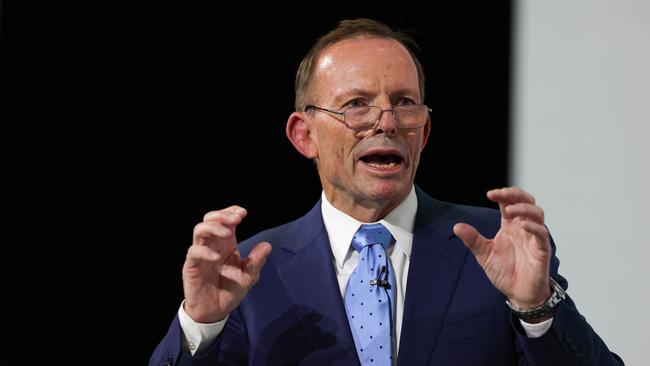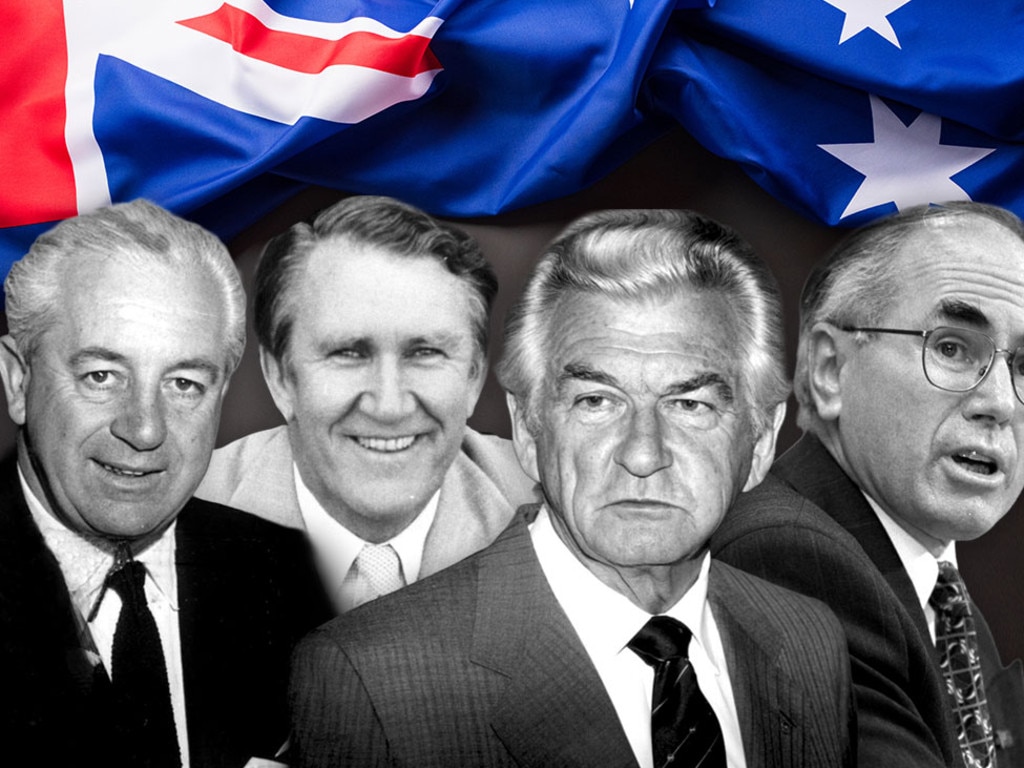Liberal existential crisis risks the party sinking further into political irrelevancy
Robert Menzies would be shocked by the state of the party he created which is out of touch and in search of a constituency.

The Liberal Party has suffered its worst election defeat since its founding in 1944. It is facing an existential crisis that goes to its leadership, candidates, values, constituency, campaigning capacity and membership. As a result, its future as a viable political force is at serious risk.
The party of Robert Menzies won the support of only 20.9 per cent of voters – excluding the Liberal National Party (Queensland) and Country Liberal Party (Northern Territory) – but even if they are added the party’s vote climbs to just over 28 per cent. Twenty years ago, the party won twice as many votes – 40.4 per cent – without the LNP or CLP.
When Menzies led the Liberal Party to its first federal election, in 1946, he was despondent as the results came in. Ben Chifley’s Labor government had won re-election. When journalists phoned the family home asking for a comment he replied: “Well, what can you say when you’ve been run over by a steamroller?”
Last weekend, the party was hit by a Mack truck.
Menzies, who led the Liberals to victory in 1949, would be shocked by the state of the party today. It is attracting less support than ever. He would be astonished to learn the party no longer exclusively represented the educated, affluent, professional, liberal and conservative middle and upper classes that were the foundation of the party for generations.
Across two elections, in 2022 and 2025, Liberals have lost heartland seats to Labor, Greens and teals in Sydney, Melbourne, Brisbane, Adelaide and Perth. This is a revolt from the party’s core constituency. It was once a reliable voter base. It is where most of the party’s members are from and where most of its donors reside.
The loss of blue-ribbon North Sydney (since abolished), Mackellar, Wentworth and Warringah (2019) in NSW; Higgins, Kooyong and Goldstein in Victoria; Curtin and Pearce in Western Australia; and Boothby in South Australia underscores the problem. The party is likely to reclaim Goldstein but Kooyong and Bradfield (NSW) remain in doubt. Winning them by only the slimmest margin is hardly a vote of confidence.
“People should stop pretending as though the Liberal Party has an existential crisis every time it loses an election,” John Howard told me after the 2022 election. The 2025 election exposed further seismic shifts in the party’s electoral geography, not only in leafy affluent professional seats but also in middle-class suburban seats across the country.
Banks and Hughes in NSW; Bonner, Forde and Dickson in Queensland; Deakin in Victoria; Sturt in South Australia; Bass and Braddon in Tasmania – all are back in the Labor column or there for the first time. The Liberal Party failed to regain Ryan from the Greens in Brisbane. A host of other divisions in Melbourne and Brisbane only just have been held. The Coalition is likely to emerge with a seat tally in the low 40s. It would need to win about 35 seats at the next election to form a majority government.
There was, and remains, no pathway back to power without regaining most of the teal seats. Yet after the 2022 election the Liberals seemed uninterested in regaining these seats. Peter Dutton hardly visited them.
Tony Abbott argued the Liberal Party could make inroads into Labor’s core constituency in the outer suburbs of Sydney and Melbourne. This was a fantasy even before the election given Liberal votes in many of those divisions were in the 20s.

Now the party is almost wiped off the map in city and suburban Australia. The scale of the crisis is evident in the startling fact that 12 seats held by leaders have been lost at recent elections: Kooyong (Menzies and Andrew Peacock), Higgins (Harold Holt and John Gorton), Lowe/Reid (Billy McMahon), Bruce (Billy Snedden), Bennelong (Howard), Wentworth (John Hewson and Malcolm Turnbull), Mayo (Alexander Downer), Warringah (Abbott) and Dickson (Dutton).
Gisele Kapterian could hold former leader Brendan Nelson’s seat of Bradfield under serious challenge by teal Nicolette Boele. Simon Kennedy needed preferences to hold Cook, previously held by Scott Morrison. And Malcolm Fraser’s once safe seat of Wannon, held by Dan Tehan, remains marginal. None of these is a safe seat any more.
The Liberal Party no longer represents mainstream values. There can be no other interpretation given the scale of the rejection from women, students, families, migrants, professionals and public servants.
The Liberal Party attracts support from only one-quarter of voters under age 45 and one-third of women. Post-election, about 30 per cent of Liberal MPs are women; Labor has about 57 per cent female MPs. This is a party going out of business.
In Menzies’ time and beyond, the Liberal Party had majority support from women and young people. The Australian Women’s National League was involved in the formation of the party and merged with it in 1945. Young people found the post-war Liberal Party attractive because it spoke to their values. Now the party looks like a white old man’s conservative outfit.
Anthony Albanese’s Labor better understands the electorate. Voters want public services that provide security and opportunity. They cherish Medicare. They support reducing student debt. They don’t want their kids to have to raid superannuation to afford a home. They back action on climate change. They want higher wages, income tax cuts and workplace flexibility. They find Donald Trump toxic.
Dutton had one of the worst election campaigns. His promise to cut public service jobs and end work from home, oppose tax cuts and end debt relief came across as mean and nasty. Culture wars on flags, welcome to country and “woke” curriculum came across as deliberately divisive. Medicare is sacrosanct yet memories of Abbott seeking to end universality with a co-payment to see a GP haunt the party.

The party’s values are archaic, it is out of touch and in search of a constituency. Menzies defined the touchstone for the party as representing “the forgotten class” of voters in the middle ground. He spoke of a party that advocated freedom, choice and enterprise. But he also spoke of security and opportunity – values now identified with and given new meaning by Labor.
The crisis confronting the Liberal Party was identified after the 2022 election but warning signs were ignored.
The recuperative powers of parties should not be underestimated. Liberals recovered from defeats in 1972, 1983 and 2007. But this is not cyclic. There is no pendulum that will automatically swing back unless remedial action is taken to move the party back to the Menzian middle ground.
Troy Bramston is the author of Robert Menzies: The Art of Politics (Scribe).






To join the conversation, please log in. Don't have an account? Register
Join the conversation, you are commenting as Logout